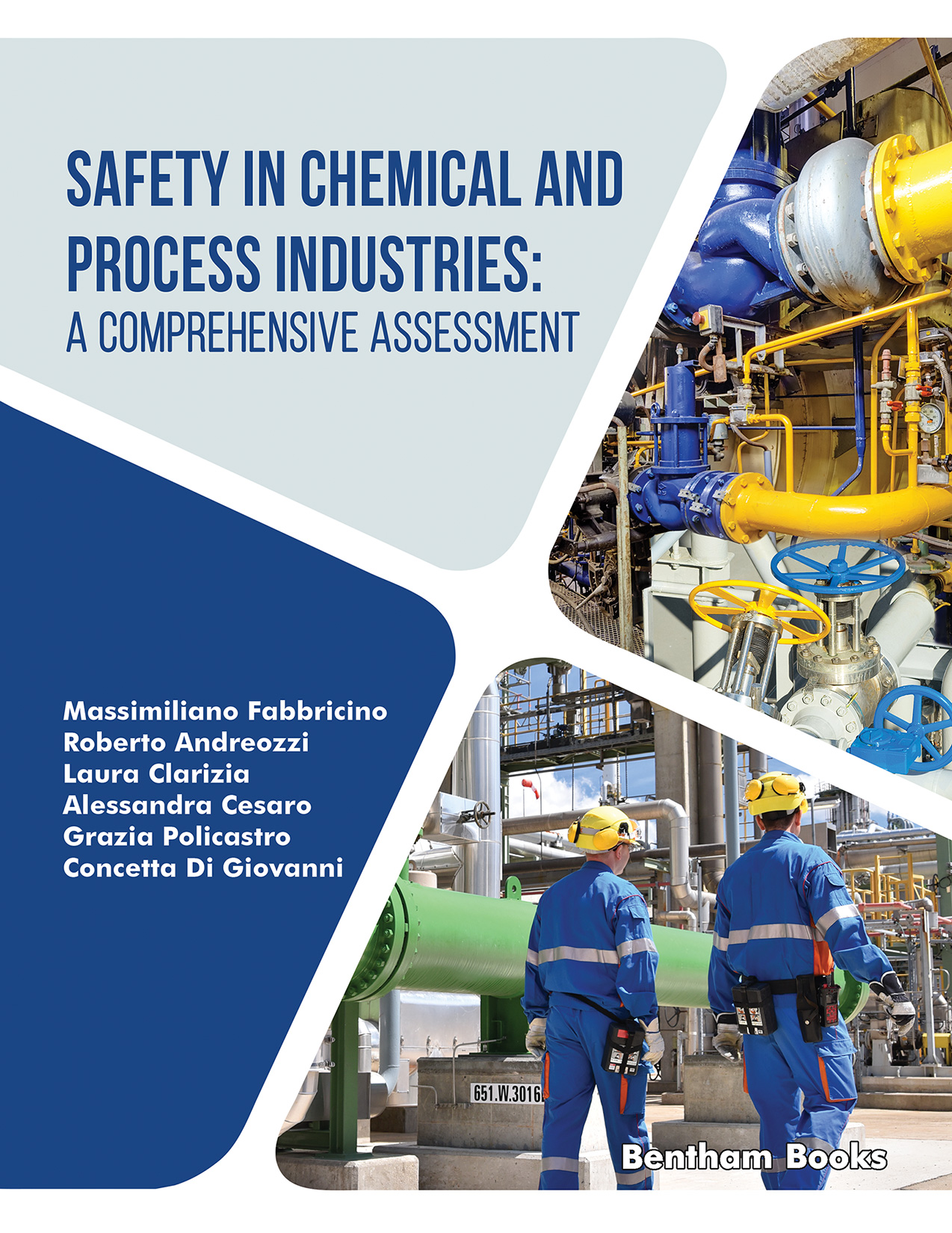Nowadays, huge amounts of chemicals are commercialized, shipped, stored, and converted to ensure the commercial availability of goods for daily use. Different hazards are involved in the use of these chemicals due to their intrinsic physicochemical properties, such as flammability, explosibility, and toxicity. Several accidents such as explosions, fires, and toxic exposure occurred in the past due to these hazards in chemical and process industries and serious consequences for people, buildings, and the environment resulted from these accidental events.
The present e-book has been developed in the framework of the European project
“Erasmus+ Programme – Strategic Partnership SAFENGINE (Project Nr: 2020-1- RO01-KA203-080085)”. The book has been designed for Bachelors and Masters’ students in chemical, materials, and environmental engineering, chemistry, environmental science, and related disciplines. The possible audience of this book also includes PhD students and experts with a background in chemical and/or environmental engineering. It provides basic knowledge of safety procedures and experimental techniques for evaluating risks related to the storage, transport, and transformation of hazardous materials. To regard safety issues
within industrial plants from a broader perspective, the e-book discusses the management of contaminated industrial sites, focusing on risk assessment to set remediation goals. Moreover, as the design and realization of most of these industrial plants undergo the Environmental Impact Assessment (EIA) procedure, their operation may turn out to be a relevant scenario for the preventive evaluation of the wider health implications. To this end, the course will also approach the Health Impact Assessment within EIA studies.
The book is organized as follows. Fundamentals of thermal explosions and calorimetric techniques are presented in Chapters 1-3. Homogeneous and heterogeneous explosions are described in detail in Chapters 4-7. Consequences of fires and heterogeneous explosions are introduced in Chapter 8, along with selected approaches to properly estimate damages related to these accidents in chemical and process industries. Basic knowledge of industrial hygiene and toxicology in the chemical industry is provided in Chapter 9. Preventive safety measures (i.e., inertization and ventilation of working environments) and protective measures (i.e., venting and use of extinguishing agents) are presented in Chapter 10 as an approach to reduce the risk related to potentially dangerous chemicals in chemical and environmental processes. The risk assessment applied to industrially contaminated sites is fully presented in Chapter 11. Finally, the health impact assessment within environmental impact assessment studies is
described in Chapter 12.
The chemical and environmental safety procedures thoroughly discussed in the present book aim at addressing many of the Sustainable Development Goals (SDGs) formulated in 2015 by the United Nations General Assembly.
More in detail, theoretical principles and practical examples of safety approaches are provided to meet the following targets:
- Goal 3 (i.e., “Good health and well-being”). A reduction in illnesses and deaths from hazardous chemicals and pollution may arise by adopting the safety procedures and assessments reported in Chapter 10, 11, and 12.
- Goal 6 (i.e., “Clean water and sanitation”). An improvement in water quality, wastewater treatment and safe reuse, along with increased protection of water-related ecosystems may result from the application of the chemical and environmental approaches described in Chapter 9, 10, 11, and 12.
- Goal 7 (i.e., “Affordable and clean energy”). An expansion and upgrade of energy services may arise from the safe management of energy companies. In this regard, the basic principles of explosions and fires reported in Chapters 1-8 should be known to properly design and control industrial work environments.
- Goal 8 (i.e., “Decent work and economic growth”). The overall content of the present book aims at improving resource efficiency in consumption and production (i.e., Chapters 1÷8) and promoting safe working environments (Chapters 9÷12).
- Goal 9 (i.e., “Industry, Innovation, and Infrastructure”). The overall book content seeks to promote inclusive and sustainable industrialization.
- Goal 12 (i.e., “Responsible consumption and production”) The following specific targets are covered in the present book: i) achieving the environmentally sound management of chemicals and waste throughout their life cycle; ii) reducing waste generation through prevention, reduction, recycling, and reuse; iii) encouraging companies to adopt sustainable practices.
- Goal 14 (i.e., “Life below water”) and Goal 15 (i.e., “Life on land”). The safe practices regarding the proper management of thermally unstable substances and toxic chemicals reported in this book aim at protecting terrestrial and marine ecosystems.

